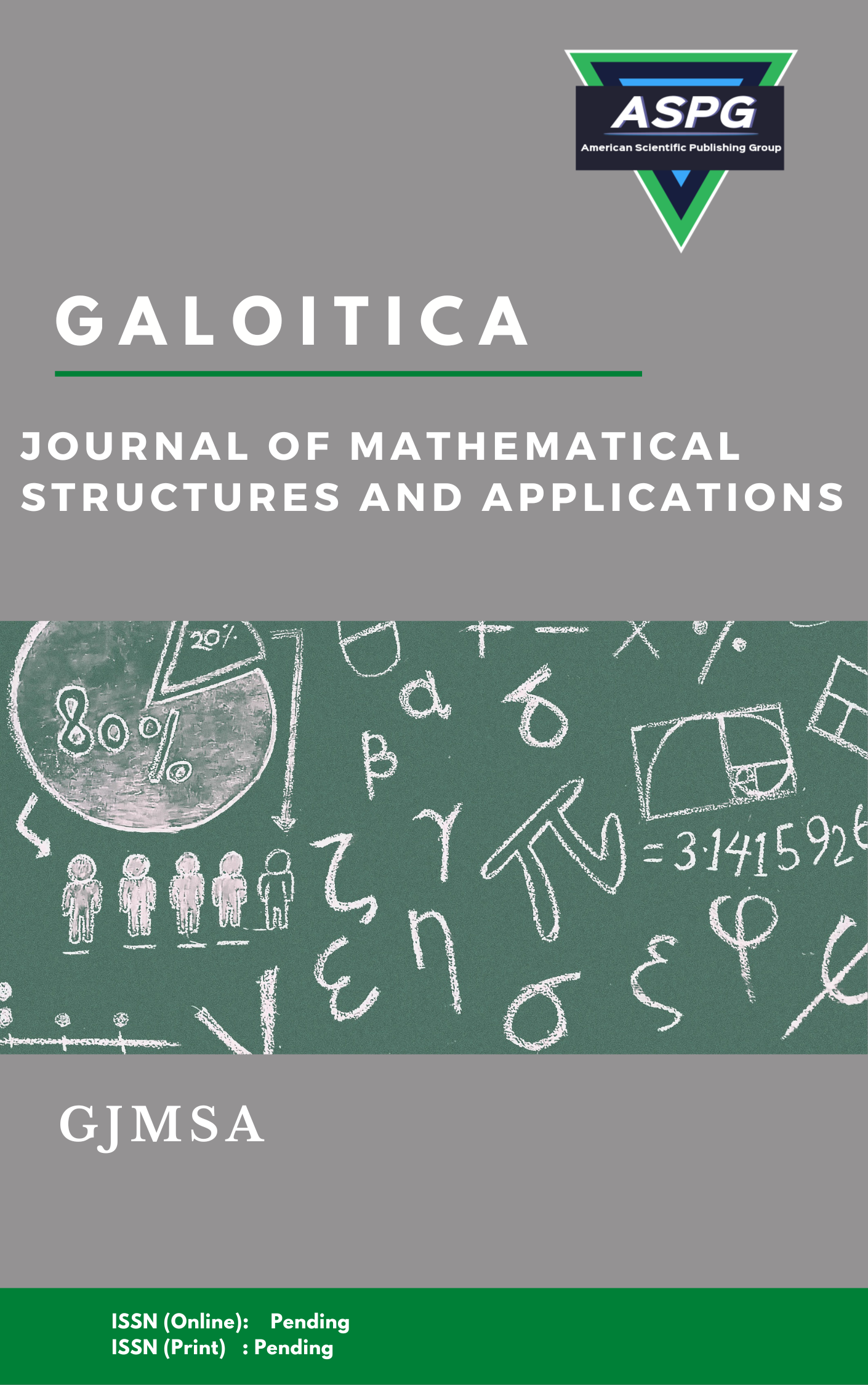

In any neutrosophic ring R(I), an imperfect neutrosophic duplet consists of two elements x,y with a condition xy=yx=x and an imperfect neutrosophic triplet consists of three elements x,y,z with condition xy=yx=x,yz=zy=z,and xz=zx=y. The objective of this paper is to determine the necessary and sufficient conditions for neutrosophic duplets and triplets in any neutrosophic ring R(I), and to determine all triplets in Z(I).
Read MoreDoi: https://doi.org/10.54216/GJMSA.020201
Vol. 2 Issue. 2 PP. 08-13, (2022)
This work is dedicated to study the equation of Schrodinger-Hermite on some well-known spaces as L_2 (R^n ) by using Hermite operator H=-∆+|x|^2.
Read MoreDoi: https://doi.org/10.54216/GJMSA.020202
Vol. 2 Issue. 2 PP. 14-17, (2022)
One of the most important areas of analytic geometry involves the concept of conic sections. The objective of this paper is to introduce the concept of neutrosophic conic sections, so that each neutrosophic conic section represents two classic conic section in the general case. On the other hand, all special cases resulting from the expansion by moving to the neutrosophic systems will be discussed and handled.
Read MoreDoi: https://doi.org/10.54216/GJMSA.020203
Vol. 2 Issue. 2 PP. 18-22, (2022)
In This work, we define two novel algebraic games over neutrosophic AH-groups. Also, we present a solution of these games in many possible cases, where some winning strategies will be discussed and illustrated by examples.
Read MoreDoi: https://doi.org/10.54216/GJMSA.020204
Vol. 2 Issue. 2 PP. 23-27, (2022)
In this work, we present a direct application for Pythagorean circles in the theory of cryptography by using integer points on these circles, as well as we describe some numerical systems to generalize classical well-known crypto-algorithms and systems. Also, we illustrate many examples to clarify the validity of our work.
Read MoreDoi: https://doi.org/10.54216/GJMSA.020205
Vol. 2 Issue. 2 PP. 28-30, (2022)